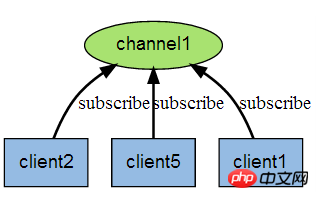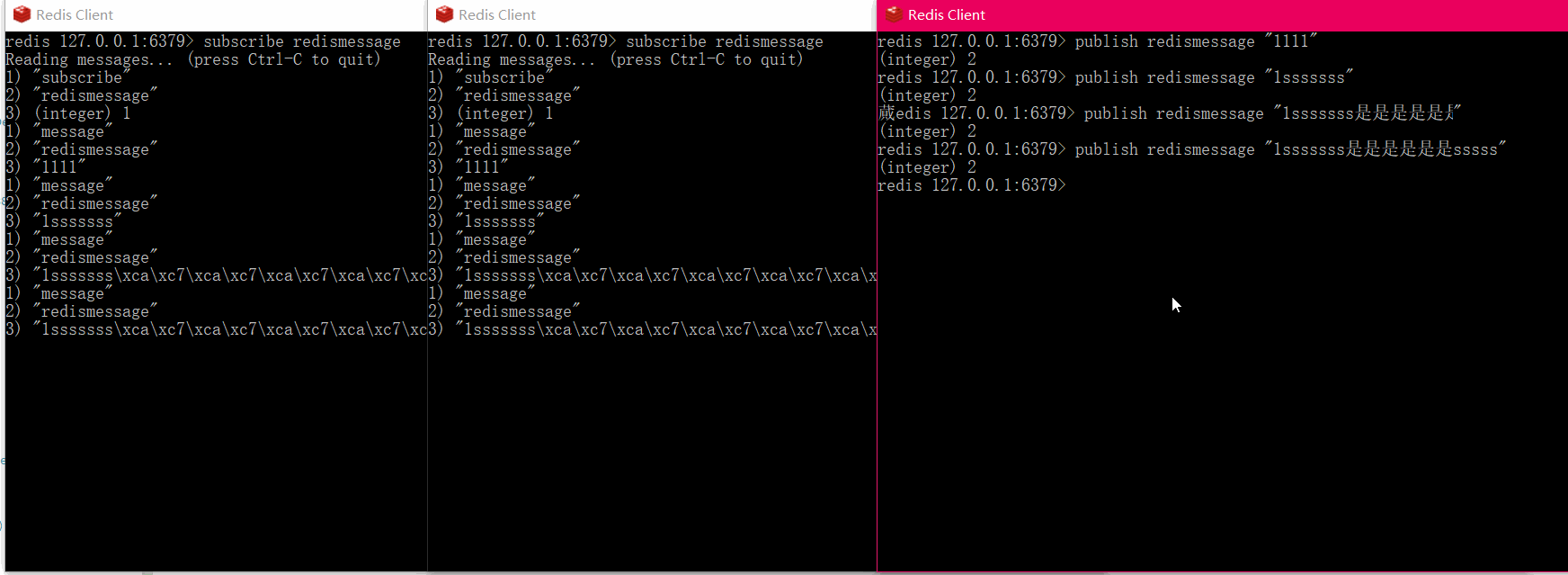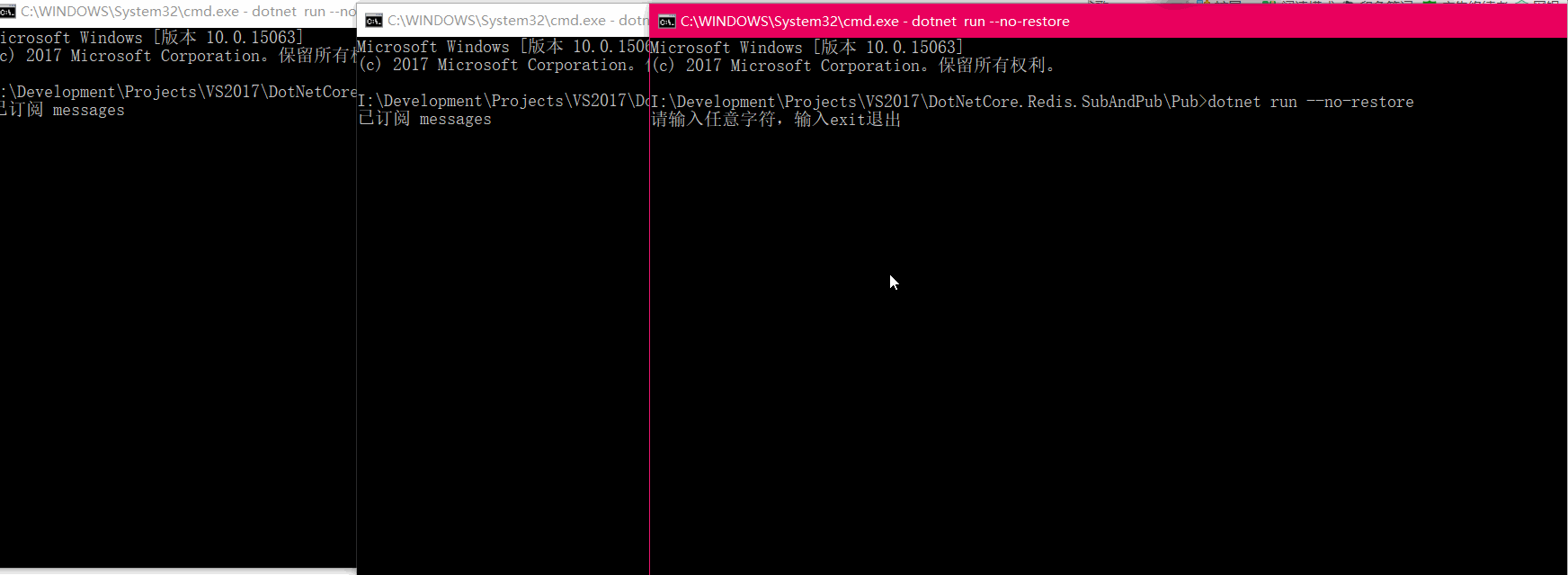 Backend Development
Backend Development
 C#.Net Tutorial
C#.Net Tutorial
 Example analysis of how core uses Redis publish and subscribe in .NET
Example analysis of how core uses Redis publish and subscribe in .NET
Example analysis of how core uses Redis publish and subscribe in .NET
This article mainly introduces how .net core uses Redis to publish and subscribe. The editor thinks it is quite good. Now I will share it with you and give it a reference. Let’s follow the editor to take a look.
Redis is a very powerful in-memory database. It is generally used as a cache, but it can not only be used as a cache, such as the famous distributed framework dubbo. Redis can be used as a service registration center. Next, we will introduce the publish/subscribe function of .net core using Redis.
Redis publish and subscribe
Redis publish and subscribe (pub/sub) is a message communication model: the sender (pub) sends the message and the subscriber (sub) receives it information.
Redis clients can subscribe to any number of channels.
The following figure shows the relationship between channel channel1 and the three clients that subscribe to this channel - client2, client5 and client1:

When When a new message is sent to channel channel1 through the PUBLISH command, this message will be sent to the three clients that subscribe to it:

Use Redis command
First, use the subscribe redismessage command to subscribe the two clients to the redismessage channel:

Then open a Redis client and use the command publish redismessage " Message content "Publish message

Using .net core to implement
The connection driver I chose here is StackExchange.Redis, which is required here Note that the ServiceStack.Redis connection driver has gradually become commercialized, and versions 4.0 and above have limitations, so choose the free and easy-to-use StackExchange.Redis and install it using nuget.
Establish a subscription client
##
//创建连接
using (ConnectionMultiplexer redis = ConnectionMultiplexer.Connect("127.0.0.1:6379"))
{
ISubscriber sub = redis.GetSubscriber();
//订阅名为 messages 的通道
sub.Subscribe("messages", (channel, message) => {
//输出收到的消息
Console.WriteLine($"[{DateTime.Now:HH:mm:ss}] {message}");
});
Console.WriteLine("已订阅 messages");
Console.ReadKey();
}//创建连接
using (ConnectionMultiplexer redis = ConnectionMultiplexer.Connect("127.0.0.1:6379"))
{
ISubscriber sub = redis.GetSubscriber();
Console.WriteLine("请输入任意字符,输入exit退出");
string input;
do
{
input = Console.ReadLine();
sub.Publish("messages", input);
} while (input != "exit");
}
The above is the detailed content of Example analysis of how core uses Redis publish and subscribe in .NET. For more information, please follow other related articles on the PHP Chinese website!

Hot AI Tools

Undresser.AI Undress
AI-powered app for creating realistic nude photos

AI Clothes Remover
Online AI tool for removing clothes from photos.

Undress AI Tool
Undress images for free

Clothoff.io
AI clothes remover

Video Face Swap
Swap faces in any video effortlessly with our completely free AI face swap tool!

Hot Article

Hot Tools

Notepad++7.3.1
Easy-to-use and free code editor

SublimeText3 Chinese version
Chinese version, very easy to use

Zend Studio 13.0.1
Powerful PHP integrated development environment

Dreamweaver CS6
Visual web development tools

SublimeText3 Mac version
God-level code editing software (SublimeText3)

Hot Topics
 How to build the redis cluster mode
Apr 10, 2025 pm 10:15 PM
How to build the redis cluster mode
Apr 10, 2025 pm 10:15 PM
Redis cluster mode deploys Redis instances to multiple servers through sharding, improving scalability and availability. The construction steps are as follows: Create odd Redis instances with different ports; Create 3 sentinel instances, monitor Redis instances and failover; configure sentinel configuration files, add monitoring Redis instance information and failover settings; configure Redis instance configuration files, enable cluster mode and specify the cluster information file path; create nodes.conf file, containing information of each Redis instance; start the cluster, execute the create command to create a cluster and specify the number of replicas; log in to the cluster to execute the CLUSTER INFO command to verify the cluster status; make
 How to clear redis data
Apr 10, 2025 pm 10:06 PM
How to clear redis data
Apr 10, 2025 pm 10:06 PM
How to clear Redis data: Use the FLUSHALL command to clear all key values. Use the FLUSHDB command to clear the key value of the currently selected database. Use SELECT to switch databases, and then use FLUSHDB to clear multiple databases. Use the DEL command to delete a specific key. Use the redis-cli tool to clear the data.
 How to read redis queue
Apr 10, 2025 pm 10:12 PM
How to read redis queue
Apr 10, 2025 pm 10:12 PM
To read a queue from Redis, you need to get the queue name, read the elements using the LPOP command, and process the empty queue. The specific steps are as follows: Get the queue name: name it with the prefix of "queue:" such as "queue:my-queue". Use the LPOP command: Eject the element from the head of the queue and return its value, such as LPOP queue:my-queue. Processing empty queues: If the queue is empty, LPOP returns nil, and you can check whether the queue exists before reading the element.
 How to configure Lua script execution time in centos redis
Apr 14, 2025 pm 02:12 PM
How to configure Lua script execution time in centos redis
Apr 14, 2025 pm 02:12 PM
On CentOS systems, you can limit the execution time of Lua scripts by modifying Redis configuration files or using Redis commands to prevent malicious scripts from consuming too much resources. Method 1: Modify the Redis configuration file and locate the Redis configuration file: The Redis configuration file is usually located in /etc/redis/redis.conf. Edit configuration file: Open the configuration file using a text editor (such as vi or nano): sudovi/etc/redis/redis.conf Set the Lua script execution time limit: Add or modify the following lines in the configuration file to set the maximum execution time of the Lua script (unit: milliseconds)
 How to use the redis command line
Apr 10, 2025 pm 10:18 PM
How to use the redis command line
Apr 10, 2025 pm 10:18 PM
Use the Redis command line tool (redis-cli) to manage and operate Redis through the following steps: Connect to the server, specify the address and port. Send commands to the server using the command name and parameters. Use the HELP command to view help information for a specific command. Use the QUIT command to exit the command line tool.
 How to optimize the performance of debian readdir
Apr 13, 2025 am 08:48 AM
How to optimize the performance of debian readdir
Apr 13, 2025 am 08:48 AM
In Debian systems, readdir system calls are used to read directory contents. If its performance is not good, try the following optimization strategy: Simplify the number of directory files: Split large directories into multiple small directories as much as possible, reducing the number of items processed per readdir call. Enable directory content caching: build a cache mechanism, update the cache regularly or when directory content changes, and reduce frequent calls to readdir. Memory caches (such as Memcached or Redis) or local caches (such as files or databases) can be considered. Adopt efficient data structure: If you implement directory traversal by yourself, select more efficient data structures (such as hash tables instead of linear search) to store and access directory information
 How to set the redis expiration policy
Apr 10, 2025 pm 10:03 PM
How to set the redis expiration policy
Apr 10, 2025 pm 10:03 PM
There are two types of Redis data expiration strategies: periodic deletion: periodic scan to delete the expired key, which can be set through expired-time-cap-remove-count and expired-time-cap-remove-delay parameters. Lazy Deletion: Check for deletion expired keys only when keys are read or written. They can be set through lazyfree-lazy-eviction, lazyfree-lazy-expire, lazyfree-lazy-user-del parameters.
 PostgreSQL performance optimization under Debian
Apr 12, 2025 pm 08:18 PM
PostgreSQL performance optimization under Debian
Apr 12, 2025 pm 08:18 PM
To improve the performance of PostgreSQL database in Debian systems, it is necessary to comprehensively consider hardware, configuration, indexing, query and other aspects. The following strategies can effectively optimize database performance: 1. Hardware resource optimization memory expansion: Adequate memory is crucial to cache data and indexes. High-speed storage: Using SSD SSD drives can significantly improve I/O performance. Multi-core processor: Make full use of multi-core processors to implement parallel query processing. 2. Database parameter tuning shared_buffers: According to the system memory size setting, it is recommended to set it to 25%-40% of system memory. work_mem: Controls the memory of sorting and hashing operations, usually set to 64MB to 256M





